Likoma Island is one of the places we liked the most during our trip to Malawi. It is a small island located in the center of Lake Malawi, very few kilometers from the Mozambican coast of the lake. In fact, together with the island of Chizumulu, these two small archipelagos are located within Mozambique itself, and despite being surrounded by its waters, it belongs to Malawi.
In 1880, British Anglican missionaries from the Universities’ Mission to Central Africa established their headquarters on the island of Likoma. This consecration, which had been created around the year 1857 after one of Livingstone’s returns to the United Kingdom, was founded by members of the Anglican church at the universities of Oxford, Cambridge, Durham and Dublin; and was one of the pioneers in the formation of black African priests. In Likoma, they built the majestic St. Peter’s Anglican Cathedral; and from the second world war, when most of the borders of the African continent were drawn, the different European colonies decided that these two small islands of Anglican tradition would become part of the current state of Malawi, and not of Mozambique.
Likoma Island is a small island that is 8 kilometers long and 4 kilometers wide. There, the main means of transport is the motorcycle (there are very few cars!) as the road infrastructure is dirt roads that go around the island. It stands out for a very hospitable and smiling local population, and for different villages that are located mainly along the coast. Most of the population live by fishing, and one of the most impressive things about the island is the large number of baobabs you will find there (if you want to know more about this tree, click here).
Likoma is one of the most beautiful destinations in the country and one of the best travel experiences you can have in Malawi. In this small oasis on Lake Malawi, you can enjoy the friendliness of the local people, the 100% African life, breathtaking sunsets, swimming in quiet beaches, walks in a spectacular environment, and a very authentic journey to get there on one of its ferries that we will explain below.
How to get there?
Getting to Likoma Island is not easy. You can only get there by boat, and the journey is long. You’ll have to cross the ninth largest lake in the world, and there aren’t many ferries a week. Therefore, if you want to visit the island you will need at least 4-5 days with the journey included.
If you are coming from Malawi, the closest town to the island is the town of Nkhata Bay, a very atmospheric town with a nice craft market and good swimming beaches around it. There, you will find the main port where the two main ferries that go to Likoma Island leave: the Ilala Ferry and also the Lamani.
Ilala Ferry
The Ilala is a ferry built in Scotland in 1949 and has been operating on Lake Malawi since 1951. It is the most popular ferry in Malawi that crosses the lake weekly from south to north, from Monkey Bay to Chilumba (near Tanzania) passing through different villages in Malawi and Mozambique. This ferry, 52 meters long, can carry up to 365 passengers and 100 tons of cargo.
On the Ilala, there are 4 categories: economy class, located on the bottom floor of the ship; the second class, located on the first floor; 7 cabins where you can have a dressing room to yourself; and first class, located on the top floor of the ferry, right next to the restaurant/bar. If you want to book the cabin, you must book in advance by contacting the company at +26501587411/309. For the other categories, you don’t need to book and you just have to manage to get in, and once inside and the boat has already set sail, a worker will come to collect the tickets and receive the payment. Our recommendation is to go 1st class as you will be at the very top of the ferry with good views of the lake, and you won’t be as crowded as people in 2nd class or economy class.
In the following image, you will find the Ilala ferry timetables. Please note that we are in Africa and therefore these times are indicative. In addition, during certain times of the year, the Ilala does not operate due to maintenance and in its place, we find another ferry with similar schedules called MV Chilembwe. We recommend that you ask one of the accommodations to update you on the schedules in case there are any changes, since these are the ones that were in place during March 2022:
To understand the following image, the ETA column means the estimated date of arrival, while the ETD column means the estimated date of departure. Ilala leaves Monkey Bay on Fridays and returns there on Wednesdays after visiting different towns around Lake Malawi. For example, if we want to go from Likoma to Nkhata, the boat leaves approximately on Saturday at 5pm and arrives at Nkhata Bay on Saturday at midnight. On the other hand, from Nkhata to Likoma, you should take the boat on Tuesday at 01:30 in the morning and you will arrive in Likoma at 9:00 the next morning. You can also take the boat from other towns such as Monkey Bay or Nkhota Kota.
Prices for this ferry in March 2022 were 7,600 Kwachas per person (about 6.50-7 euros) from Likoma to Nkhata Bay for 1st class seats which are paid once you are on board. There, you will find a restaurant where you can have soft drinks and beer, and you can also chat with the local people. The journey takes around 7 to 8 hours. We traveled from Likoma to Nkhata on this ferry. In Likoma, the boat does not moor at the port, but waits in the lake, in front of the coast, and to access it, you have to take small motorized canoes where you pay 200 Kwachas per person – about 0.15€ – to take you to the entrance door of the ferry.
Traveling with Ilala is one of the experiences you cannot miss during your trip to Malawi. It is a ferry with many years of history that will allow you to navigate one of the largest lakes in Africa, while balancing to get on the ferry, watching how the goods and animals are loaded, and enjoying the immensity of the lake that David Livingstone defined as the lake of stars.
Lamani Ferry
This ferry only operates between Nkhata Bay, Chizumulu Island and Likoma Island. It started operating in 2014 and is one of the smallest ferries (if you can call it that) that navigates the lake. It has two floors, where the ground floor is for goods and the top floor is for passengers, but in reality, both floors are for goods and passengers.
The Lamani leaves Nkhata Bay on Mondays and Thursdays at 3am; and from Likoma it leaves on Wednesdays and Saturdays at 8am. The journey usually takes between 7 and 9 hours, after a short stop in Chizumulu. We took the Lamani on Thursday at 3am, and we arrived around 10am in Likoma. We recommend that you go to the Nkhata Bay port a few hours early in order to get a place on the boat, as from the evening it is filled with goods and people who take up positions to lie down and sleep during the journey. We went there at midnight, and the boat was already full of people. The price of the journey is 3,000 Kwachas (about €2.60) per person, which you will pay once you are on this small ferry.
Traveling with the Lamani is an experience for adventurers. With a much smaller infrastructure than Ilala, you will probably be one of the few tourists traveling there as most people are locals going to Likoma to visit family, or returning loaded with goods from Nkhata Bay. Bring a raincoat because if it rains you won’t be able to shelter much from the rain.
Once inside the island, the main means of transport are motorbikes that will act as taxis and take you along the narrow sandy roads to the different points of the island. For example, to go from the dock where the boat leaves you to the Mango Drift area is a total of 2,000 Kwachas per person.
What to do in Likoma Island?
Likoma is a small island located to the east of Lake Malawi where there are different activities to do. Among these, we highlight:
Live the experience of the ferry to Likoma Island
Just the boat ride to get to Likoma Island is already one of the experiences you will surely remember during your trip to Malawi. Being able to sail in the waters of the ninth largest lake in the world and discover the transport that the local people use and how they use it is already an activity that is well worth experiencing.
The Ilala is one of the iconic boats on Lake Malawi because of its history, but also because it is the only boat that sails weekly through the different towns of Lake Malawi. It is essential transport for many locals who regularly use it to get around, and you cannot miss the experience of traveling in this boat.
There, you will fully immerse yourself in an unforgettable experience: you will see the chaos of people and goods being loaded through small boats, you will be able to talk to many local people and enjoy their friendliness, you will sail on Lake Malawi in through one of the country’s most emblematic boats and, finally, you will feel like an explorer in a very special atmosphere.
If you can’t go with Ilala, traveling with Lamani is also quite an experience. Surely, much more uncomfortable than the Ilala, since it is a much smaller boat where you will not be able to move around the different parts of the boat because you will be completely cramped.
Walk through the different towns of Likoma Island and enjoy the large number of baobabs on the island
The island of Likoma is an ideal destination for exploring on foot. There, the main means of transport is walking, although you can also take one of their motorbikes that will take you to different parts of the island. Discovering the different towns and talking to the local people is one of the essential experiences during your visit to Likoma.
You will find different paths that connect the various towns on the island. These roads are usually dirt and narrow, and circle the entire coast of Likoma, which is where the main urban settlements are located. We made a walk between Mango Drift and Ulisses Bay that took us about two hours, and which we really liked to enjoy the hospitality of its inhabitants, but especially its baobabs.
We agree that baobabs are very special trees. Their majesty makes them one of the iconic trees of the African continent, and their long years make you feel like a privileged and fleeting spectator.
In Likoma, the baobabs stand out above the rest of the vegetation. On this island, you will find quite a few of them and, in fact, they are one of the iconic and characteristic features of the island. Being able to walk and pass by these ancient trees is one of the experiences you cannot miss during your stay in Likoma.
Visit the cathedral of Sant Peter, one of the biggest cathedrals in Africa
The Anglican Cathedral of Saint Peter, known as St. Peter’s Cathedral, is a majestic building that attracts attention to be found on Likoma Island, an island of just over 25 square kilometers. There, in 1890, the British Anglican missionaries of the Universities’ Mission to Central Africa established their headquarters. It is located a few minutes from Mbamba, the main town on the island where we find different food establishments and shops and where all the ferries arrive.
The magnificent cathedral built between 1903 and 1911 with solid stone walls from which a neo-Gothic tower protrudes is one of the most colossal buildings in Malawi. The central nave, the apse and the stained-glass windows seem taken from another era. In addition, on the altar we find a crucifix that is supposedly carved from the wood of the tree under which David Livingstone’s heart was buried.
The missionaries left the island in the 1940s, leaving as a legacy not only one of the places with one of the highest literacy rates in Africa, but also one of the most impressive constructions in Malawi.
Visiting St. Peter’s Anglican Cathedral is an experience you cannot miss if you go to Likoma Island. Seeing this temple of immense dimensions in this small place located in the middle of Lake Malawi demonstrates the great Anglican missionary influence in this country.
Swim in the waters of Lake Malawi and relax in some of its accommodations
On Likoma Island, you can find different places to enjoy a swim in the waters of Lake Malawi. You can swim in one of the towns or, also, relax in some of its accommodations such as Mango’s Drift or Ulisses Bay.
The only thing you need to be aware of is the issue of bilharzia, also called schistosomiasis. It is a disease caused by a worm that lives in calm waters such as lakes, and that causes parasitic infections in the human body. This disease can cause diarrhea, fevers, blood in the urine or abdominal pain, among others. It is said that if you get infected with bilharzia, you will notice itchy skin. One of the ways to prevent this disease is to take pills that are sold in the same pharmacies in Malawi known as Praziquantel. Depending on your body weight, you will be given a quantity of pills that you will have to take between 6 and 8 weeks after your last swim in the lake. You can buy them in pharmacies in the country without any kind of prescription and at an affordable price (around 1.50 euros). For more information about this disease, you can click here.
Aside from eating at some of the accommodations, you can go kayaking around the lake or lie back on the sand while reading a book or letting your mind go blank. In addition, you will be able to discover some of the different community projects that exist on the island such as the Ulysses Bay Lodge ceramics project, which is led by Chris Stevens.
Chris is a man of British origin who has been living in Malawi for many years and who has created different ceramic projects in the country in order to develop projects to empower local communities through ceramics. After creating different associations related to ceramics in different parts of Malawi, he settled in Likoma where he carries out a very interesting project to visit with some very beautiful handmade ceramics. You can find more information here.
Enjoy the beaches of Nkhata Bay, before or after going to Likoma Island
Nkhata Bay is a town that is the gateway to Likoma Island. With a small port but important for the lake’s fishing industry, there you can find a very interesting craft market and a very lively atmosphere. Many people stop at Nkhata Bay to participate in different volunteer projects or to access Likoma.
In fact, Nkhata Bay is the northernmost point reached by the explorer David Livingstone during his expeditions to Africa. There, you can also enjoy one of its beaches, especially in the Chikale area and where most of the tourist accommodation is concentrated, to take a swim and to practice diving when the lake waters are calm.
This is a good city to use as a base camp during your visit to Likoma, and where you can also enjoy its atmosphere and beaches before or after visiting the islands of Lake Malawi.
Visit Chizumulu Island
Chizumulu Island is the smaller of two inhabited islands in Lake Malawi, after Likoma Island. It is located very close to it and, therefore, surrounded by the territorial waters of Mozambique from Lake Malawi. You can get there with the boat itself that leaves from Nkhata Bay and usually stops first in Chizumulu. Despite being much less known than Likoma, the island has approximately 3,000 inhabitants and you can walk around it all in around 3 hours. It stands out for two large hills, cassava plantations and a more wooded part. It has little tourist infrastructure, but it can be a good day trip from Likoma to enjoy one of the smaller islands in Lake Malawi.

Where to sleep in Likoma Island?
Likoma Island has some very nice accommodation located on the lake front. We left by ferry from Nkhata Bay, where we also spent the night, and for this reason we will also highlight an accommodation in Nkhata where we felt very comfortable. Therefore, among the sleeping options we highlight:
– Mango Drift: We stayed here during our stay in Likoma. Great value for money, this accommodation is located on the west coast of the island, specifically Mbungo Beach. The reception/bar is under a large Mango, hence its name. It has eight cabins right in front of the beach, where at night the only thing you can hear are the waves of the lake. There, you can take a swim on its beach, relax in one of its hammocks and enjoy the gastronomy of one of its meals. In addition, you have the option of diving and kayaking. Without a doubt, one of the most beautiful accommodations on the island of Likoma. For more information, you can click here.
– Ulisses Bay: This accommodation is another alternative to stay during your days on the island of Likoma. It is located in the north-west of the island and has a good restaurant and rooms overlooking the lake, from where you can enjoy a fantastic sunset behind the Bay of Ulisses. In addition, they have a very interesting community pottery project, and the owners are very friendly. For more information, you can click here.
Butterfly Space Nkhata Bhay: This accommodation is undoubtedly one of the best accommodation in Nkhata Bay. Located right in front of the waters of Lake Malawi and slightly removed from the hustle and bustle of the city, it is a non-profit community accommodation with different types of accommodation for all budgets. You can camp with a tent or sleep in some of their cabins. It has a restaurant, and an overwater bar where you can relax in a hammock, play pool or swim in a private beach area while enjoying a cocktail or beer . An ideal place to relax before or after traveling to Likoma Island. For more information, you can check their website here.
Our route
DAY 1: After enjoying a few days in the northern area of Lake Malawi and discovering the city of Livingstonia and its surroundings (to learn more about this part of the country, click here), we drove our car to reach the town of Nkhata Bay. From there, we would leave overnight for Likoma Island on the Lamani boat.
Before that, however, we had time to enjoy the surroundings of this lakeside town, where we were able to enjoy a swim in Lake Malawi, and we were able to relax on the shore of its waters. Consider swimming in the lake is allowed, although they recommend taking anti-bilharzia pills a few weeks after your last swim in the lake.
Esteve took the opportunity to go to the dock where the Lamani boat was already moored in the harbor preparing for the night route to Likoma. There, since the schedules were very uncertain, he was able to speak with the captain who confirmed that he would leave at 3am the next day and that there would be place for us: Esteve, Laia and Susanna. There was no need to book a ticket and he recommended that we get there 1 hour early. Anyway, just in case, we’d take a taxi at midnight and head to the port. And luckily we did…
Once the timetables were found out and that we would be booked by our boat to Likoma Island on a journey that would last approximately 7 hours, we took advantage of the last few moments of the afternoon to rest and relax at the Butterfly Space facilities in Nkhata Bay. There, we had an early dinner and tried to rest for a couple of hours.
While we tried to sleep, there was quite an atmosphere outside. Young people merrily chatting, drinking and going around the outside garden of our cabin. To our surprise, we found a couple we had seen in Livingstonia some days before, with the boy somewhat drunk; and when silence was beginning to reign, the alarm clock rang. It was time to start our journey to Likoma Island.
We left the car in the Butterfly Space parking lot, and a taxi driver took us to the port. There, in the background, the Lamani was still waiting; but, to our surprise, it was completely full of goods and people lying asleep on the timbers of the boat. The Lamani was a small boat, about 12 meters long and had two floors. It was an old ship waiting for its captain’s signal to set sail into the deep waters of Lake Malawi.
We went in to make sure we had a place, passing among huddled people who were sleeping under blankets, goods and baskets full of food, cartons wrapping various packages bound for Likoma, and a mass of huddled bodies that we tried not to step on as we they set foot on the boat. Finally, we found a small space on the starboard side where we could stand, crammed in between the people and the various objects that were haphazardly placed on the ship. There were even people sleeping on the edge of the boat! It was amazing how they could be so calm lying there, with the slightest movement they could fall into the water in the middle of the night.
After a few hours of waiting, trying to bump heads and changing positions several times so as not to step on everything around us, the boat’s engines opened, and some flashlights made us understand that the captain was already inside the boat and that it would be a short time before embarking. A guy came by to collect our ticket. A journey of approximately 7 hours awaited us, where we would start at night and see the dawn from the waters of Lake Malawi, until we reached Likoma Island, with a short stop at Chizumulu, an island near Likoma.
We began sailing at night through the waters of the lake, with the waves crashing against the timbers of the boat, and darkness taking over the whole atmosphere. Esteve tried to rest on the floor, surrounded by baskets and suitcases, while Laia and Susanna tried to find the best position (if there was one) to make this trip easier.
We sailed at night, without any reference on our journey, accompanied only by the water of Lake Malawi, the moonlight, and the rocking of the ship. The hours passed slowly and, inside, you imagined how people who cross straits to escape the poverty of their country in search of a better future with boats that, for sure, were very worse than ours lived this situation.
It was getting day but, unfortunately, it was a day full of gray clouds. We didn’t get to see the sunrise, but we did get to start looking at the different people and kids around us and discover the different packages that were there. The waters of the lake were not calm, and the boat was rocking as they began to glimpse two islands in the distance: we were already close to our destination.
First, we stopped at Chizumulu, where some local people laden with goods disembarked in order to supply this small island in Lake Malawi. And then, just as we were heading to Likoma where, according to our clock, there was still an hour left to go; it started raining. First, a fine rain, but then, more and more violent. We took refuge under our raincoats, and the boat was filled with a large plastic that tried to protect the people and the various objects.
Fortunately, we were following the coast of the island of Likoma, and we could already observe its beauty with the green landscape where its baobabs stood out, and its beaches with people making life in their waters. We also crossed some fishing canoes, until we saw a small town, Mbamba, which was our final destination. There, there was a small pier where the boat would moor, and from where we disembarked to set foot on dry land after 10 hours on the Lamani: seven hours of travel and three hours waiting on the ship.
DAY 2: The island of Likoma greeted us with rain. A crowd of people was waiting at the pier, where young people were hauling packages up and down and loading them onto different motorcycles that scurried away in the rain. The arrival of the Lamani was surely one of the most important activities of that day for the entire local population of the island: local people arrived after being away for a few days, packages and goods arrived and new tourists arrived. In fact, we were the only white people on the whole boat.
We took shelter under the porch of the grocery store near the pier, and once the force of the rain subsided, we looked for three riders to take us to our final destination: the Mango Drift. In a journey of about 20 minutes, we traveled through different narrow dirt roads, between puddles and mud, until we were dropped off at a place from where we walked about 5 minutes to reach our accommodation.
The island exuded an atmosphere of incredible authenticity. On the motorbike, the gray landscape of the clouds and the rain that had recently fallen contrasted with the green of the trees, the different houses we passed and the life of the local people who shyly greeted us as they passed by. We were in a remote location on Lake Malawi that we really wanted to discover!
The accommodation was fantastic. We had wooden cabins right in front of a beautiful beach on Lake Malawi and a spectacular setting. The workers were already waiting for us, so we settled in and rested a bit from the trip before going to discover the island.
We had lunch at Mango Drift and then walked to the only antenna on the island. We tried to follow different paths drawn between the green vegetation that protruded from the fields, and we began to climb and gain a panoramic view of this whole environment. The greenery stood out, and the narrow paths where only a motorcycle could pass. But, above all, what made that vegetation special was the number of baobabs we found.
The baobab tree is an incredible tree, and being able to enjoy its majesty in a small and remote place on Lake Malawi made it even more emotional. It seemed a lie that these trees could be so prevalent in a small space of land in the ninth largest lake in the world. We took several photographs to immortalize the essence of these trees while enjoying the contours of Likoma Island.
It was time to head back to Mango Drift. The 10 hours on the Lamani were already starting to take their toll, so we enjoyed a swim on the accommodation’s beach while watching the sunset peeking out from some high clouds. Luckily, the rain of the morning had dissipated and we were enjoying good weather.
We had dinner in one of the cabins of the accommodation, while listening to the sound of the waves and went to sleep because the next day we would go on a longer excursion and discover some of the local villages that are located on Likoma Island. Today was a much quieter night than the previous day on the Lamani.
DAY 3: Today we had to take a long route to discover the island. We had rested very well, so we started a trek through the western part of the island that would take us to Ulisses Bay Lodge.
The path was spectacular, between baobabs and fields full of vegetation and rocks that had as a backdrop the waters of Lake Malawi. On one of these paths, we encountered a dog that didn’t have a very friendly face, so we detoured to find a shortcut higher up.
During the journey, we passed through different towns where the first to receive us were always the children. They looked at us strangely, as if saying, what are these people doing here? But after a smile, they took our hands and walked us a bit. Sometimes, we had to insist that they return to the village because we were quite far away and we didn’t want to cause problems for their families.
Some children swam on the beaches, while some adults prepared the equipment to go fishing or dry the fish. In some town, we would pass around a community meeting or somewhere where different teenagers were meeting who seemed to be going to some kind of technical school. Being able to see the day-to-day life of the local people, who happily greeted you for your short visit, is one of the memories we take with us from this island. The smile, hospitality, and friendliness of many of its inhabitants who, despite living in a remote place with very little infrastructure, transmitted a very affectionate energy and vitality.
We arrived at our destination: Ulisses Bay where we would stop for lunch with a good plate of vegetables and fish. There, we met the owner of the accommodation. Chris is a man of British origin who has been living in Malawi for many years and who has created different ceramic projects in the country in order to develop projects to empower local communities through ceramics. We chatted with him for a while, visited his shop and took home a piece of pottery as a souvenir and to collaborate with his project.
In the afternoon, we returned along the same route to the accommodation where we met up again with the different boys and girls from the morning with whom we shared some hand games. Really, in Malawi people are very hospitable and you feel very welcome everywhere.
We arrived at Mango’s Drift to enjoy another swim and another sunset, and dined to enjoy another starry night on Likoma Island, a place that captivated us and will surely be would make it one of the most beautiful experiences of our trip to Malawi.
DAY 4: Today was the return day. We would take the Ilala boat, one of the country’s flagship ships built during the colonial era and which has sailed the lake’s waters for decades. This ferry is one of the most spectacular experiences you can live on Lake Malawi.
After waking up to the sound of the sea waves, we took the motorbikes again to go back to the port. In Africa, the timetables are not fixed: sometimes the boat can leave earlier or later; so we went there in time in order to have a place at the Ilala.
On the way, we said goodbye to a very beautiful island, in a very rural and local atmosphere, passing by lanes next to groups of houses in some village, children who said goodbye with a frightened look to see us there, motorcyclists who greeted us when we crossed them and passing by what appeared to be assembly meetings of a group of residents.
Once we reached the main street of the port, with the shops already open, as we saw that we still had time left, we asked the motorists if they could take us to the most illustrious church in Likoma, which was located few minutes from the pier. This church, known as St. Peters Cathedral, is one of the biggest churches in Africa that was built by British Anglican missionaries during the colonial era.
We drove along dirt roads until in front of us we saw the imposing neo-Gothic tower and the apse of the cathedral. It was incredible to see a building of those dimensions on a small island in Lake Malawi! We went inside the church to also see the small cloister and the cross that is supposedly carved from the wood of the tree under which David Livingstone’s heart was buried, and after enjoying the silence and majesty of the building, we went back to the pier with the 3 motorbikes that were waiting for us outside.
When we arrived at the pier, there was already quite an atmosphere. The ship Ilala was so large that it could not be moored to the timbers of the port. So, the only option was to take a small boat that would take you to the starboard or port side of the boat. There were two types: the public ones that had an immense queue, or some private ones that you could pay an amount of €0.10 to take you there. We, being loaded with backpacks, took the latter and with more local people who wanted to get on the Ilala to bokk a place, we went to the ferry which was less than 1 minute by boat from the port. Don’t think of the ferry as a 10 meter long boat with a lot of capacity: these boats wooden fishing boats, many with running water inside, which with a small engine line up to the Ilala’s door .
Climbing the Ilala was quite an experience. You had to enter by stairs with a small door where you could only see a bunch of people who also wanted to leave. Some were loaded with objects they were carrying, others with animals such as goats or chickens, some women were carrying their children on their shoulders, and some were trying to be the first to pass. A soundtrack of screams, noises, unpronounceable words and the collision of the ferry with other small boats accompanied the function. After passing from boat to boat to be able to reach the foot of the stairs, we were able to climb and as if we were ants enter the Ilala ferry, where we had to make space to continue moving towards the stairs and go up to the top floor, from where we could enjoy some fantastic views.
Fortunately, we found a place at a table next to the bar which was the only place that was covered, and there we put our luggage while we waited for the captain to give the signal to leave. From inside the boat, we got close to watching many more people get on board, and the aerial view from above was breathtaking: a mix of colors, clothes, small boats, people, objects, cries, arms trying to help people and animals made a difficult snapshot not to photograph.
After a while, the ferry seemed to start moving. A reviewer came to whom we paid the tickets and we settled in our space while the bar was filled with people who started to consume drinks, we don’t know if for taste or to get over the possible motion sickness faster. A route of about 7-8 hours awaited us to reach Nkhata Bay.
On the way, we took the opportunity to go down to the other parts of the Ilala, where people were huddled together sleeping in small inner rooms, some taking the opportunity of being locked in a boat to meet people, others talking, and others were sitting on the objects they brought from Likoma.
This journey was much more comfortable than the Lamani, in the sense that the boat, being much larger, did not move as much due to the movement of the waves. On the horizon, we could already see land and the trip passed quickly chatting, observing our surroundings and sailing on one of the most iconic ships in Africa of the 20th century.
We arrived at Nkhata Bay, where the ship moored at the port and from there we set foot on the Malawi peninsula again. We left behind 4 days of experience in Lake Malawi, and on an island that we recommend every traveler to visit. After arriving again at our accommodation, and finding our car that we had abandoned in a hostel parking lot, we left our things in the room and took a swim on the quiet beaches of the lake Malawi.
We had dinner by the lake, relaxing in a much more European atmosphere than we were used to in Likoma. Before going to bed, and despite a scare from Esteve with his toenail that was punctured climbing the stairs of the bar in the dark, we prepared all the luggage to continue on the route, the next day, discovering this beautiful country that we were liking so much.

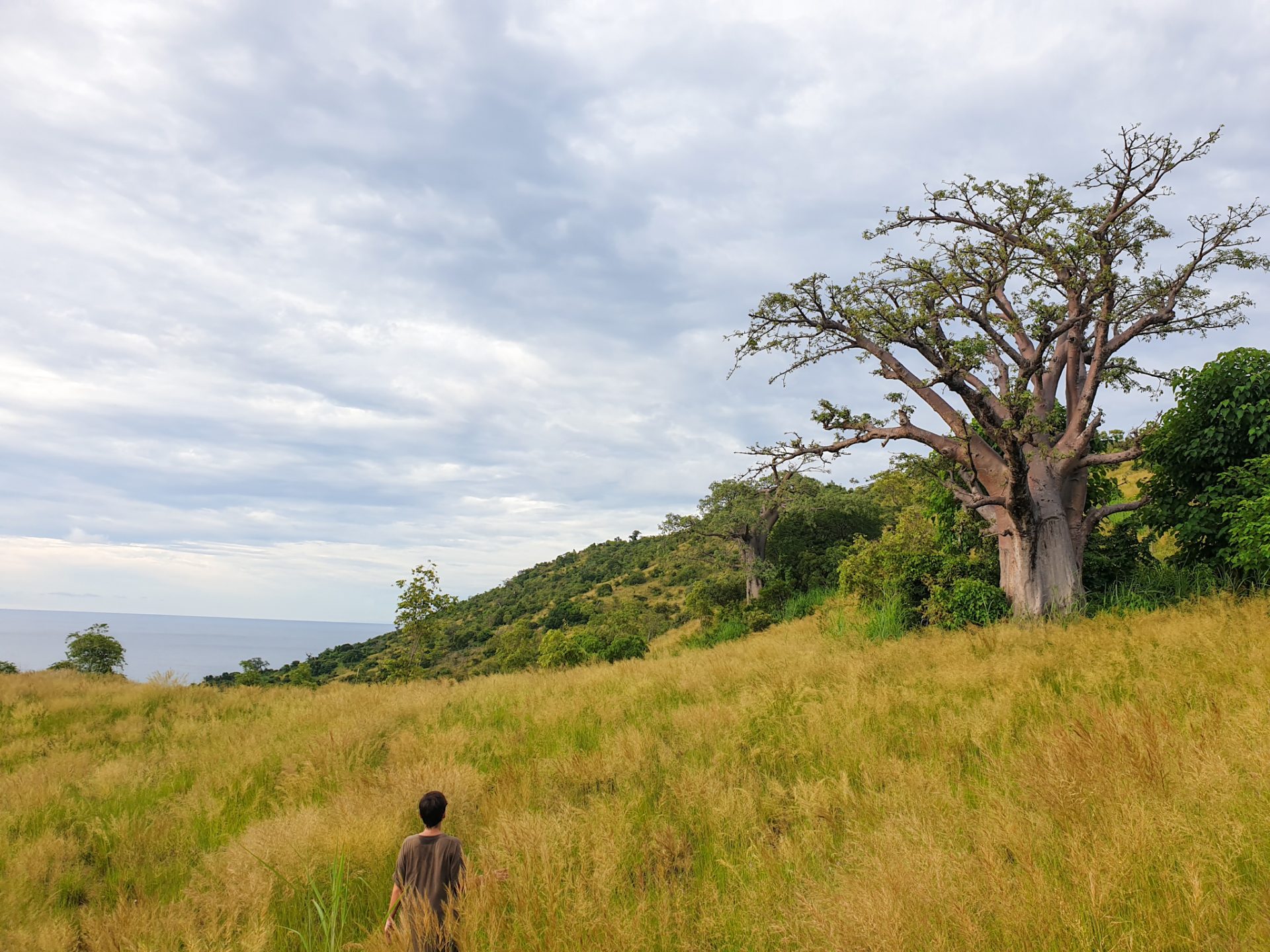





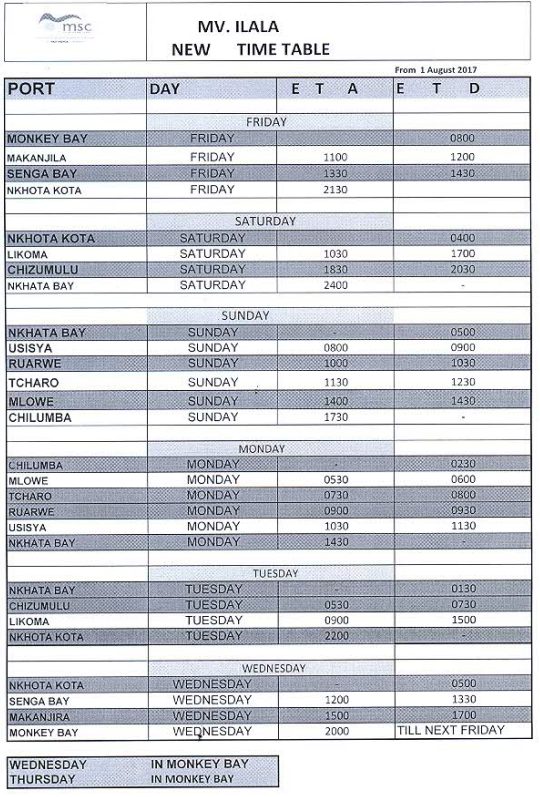
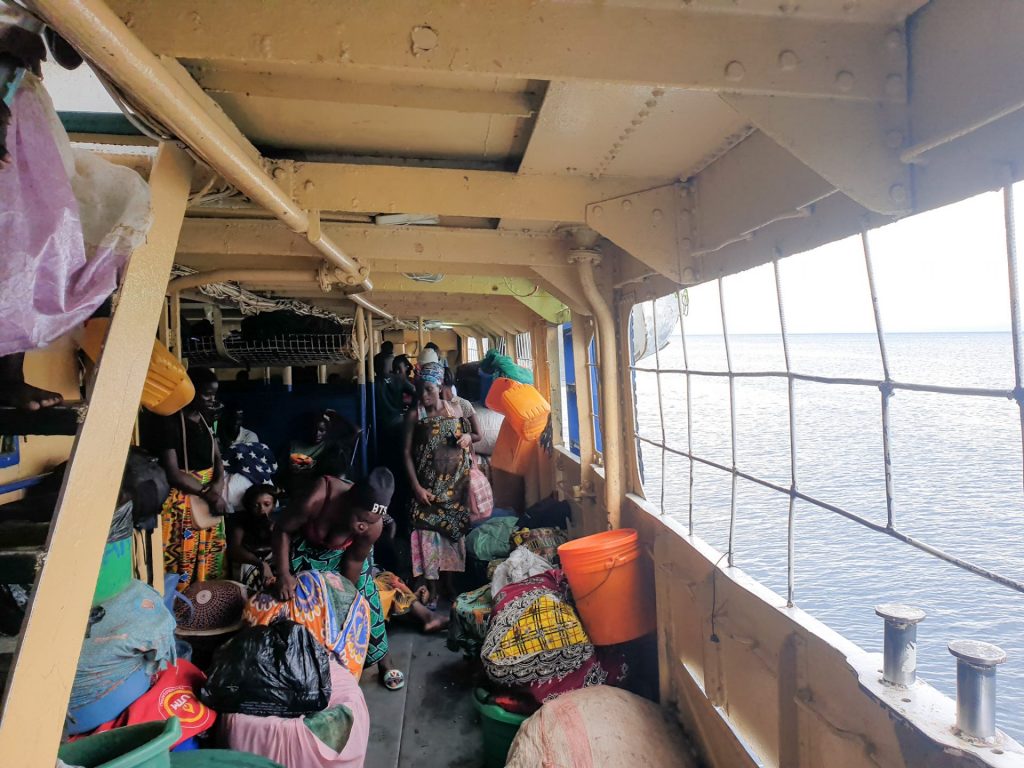
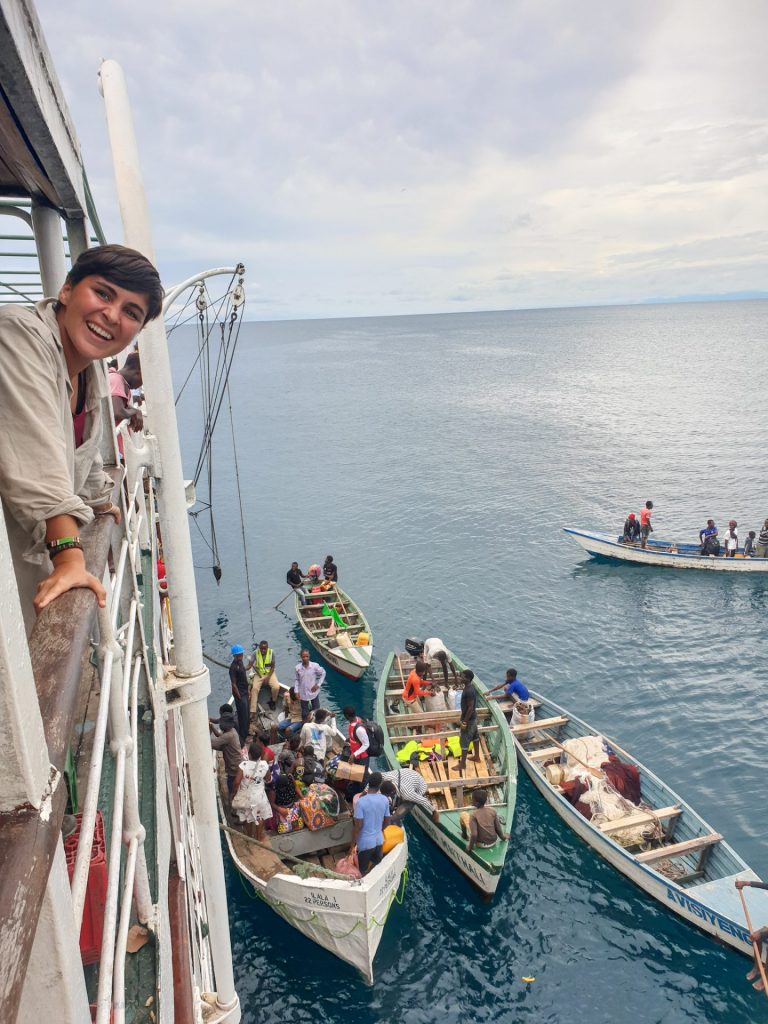
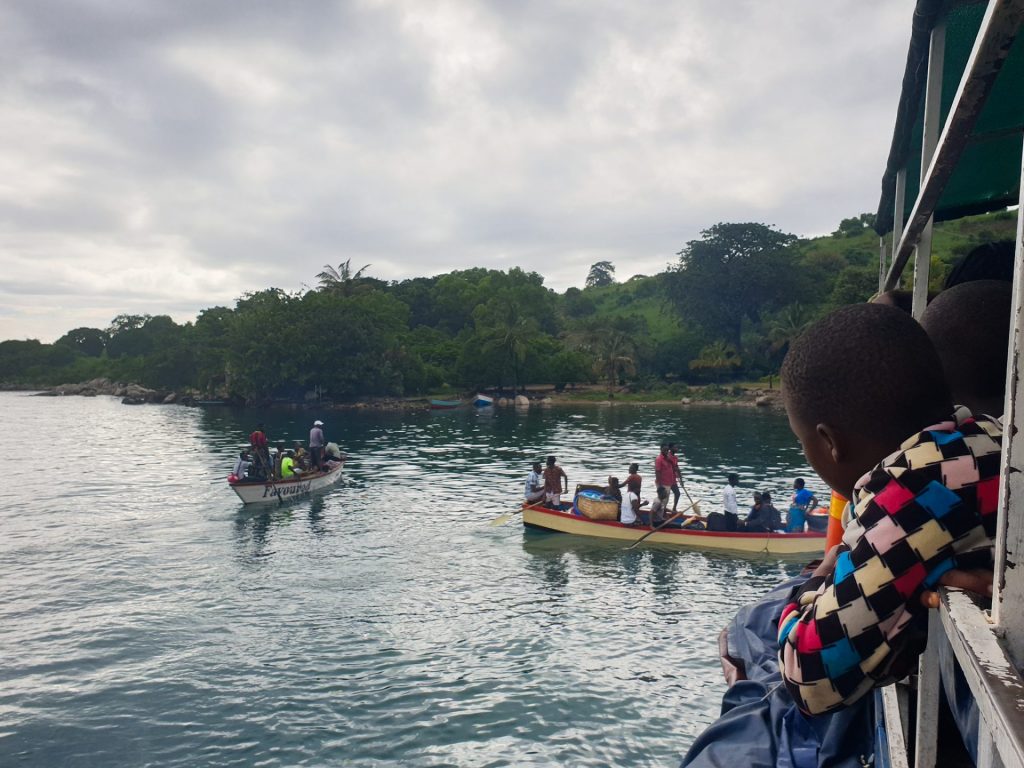
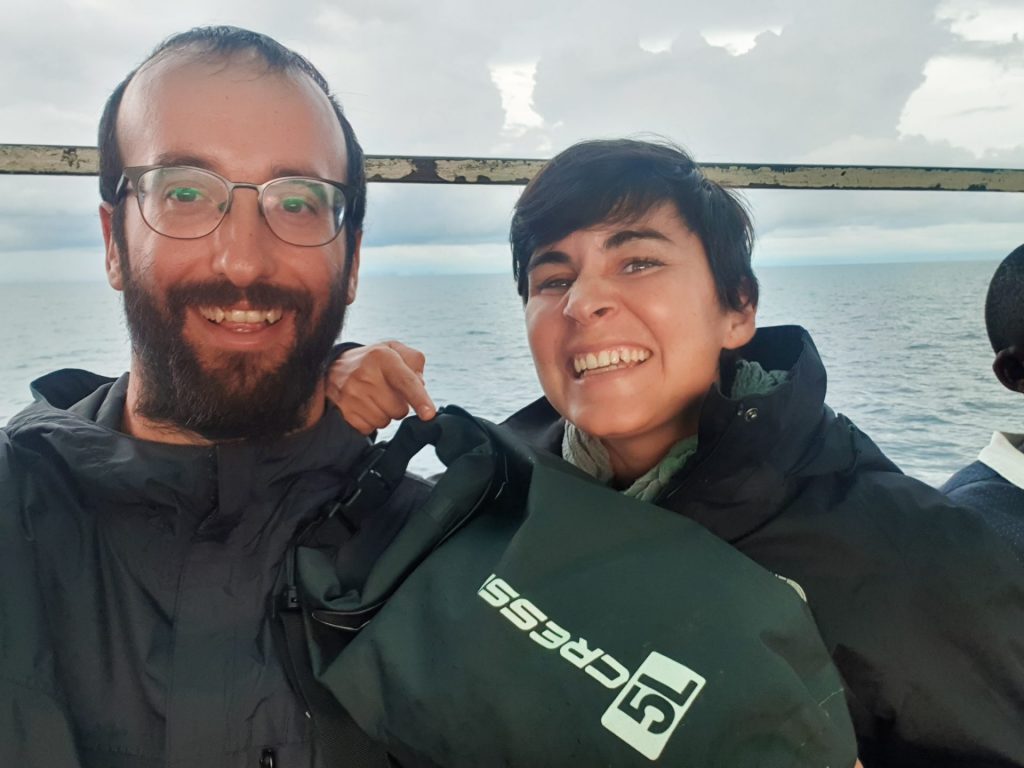




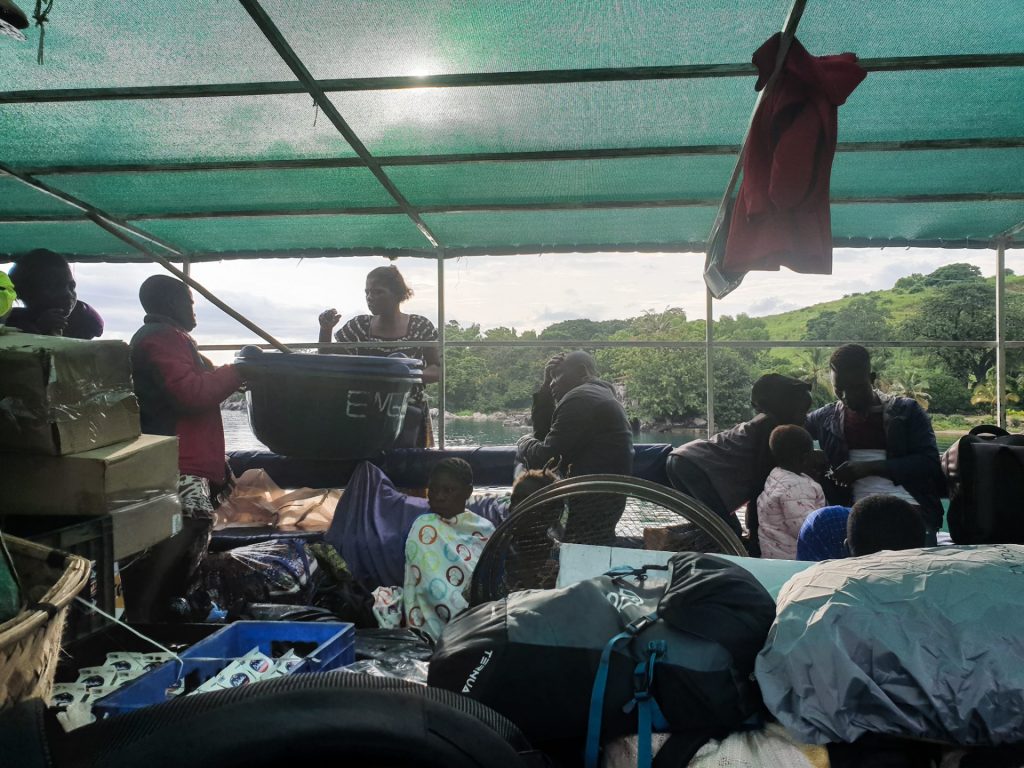
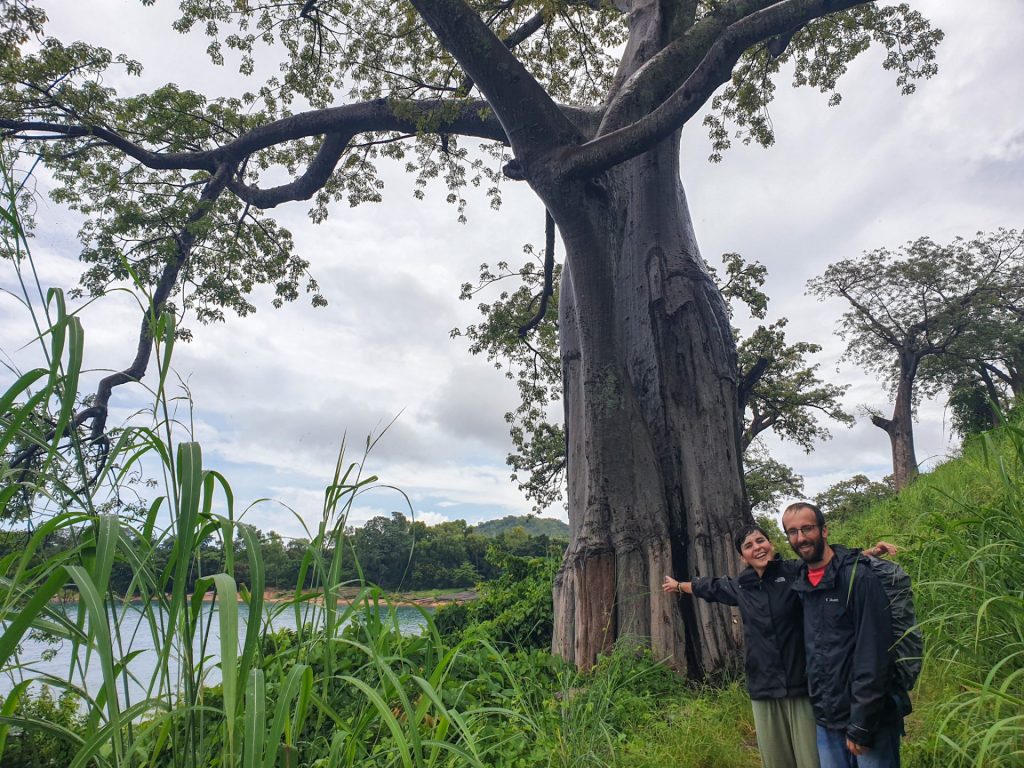
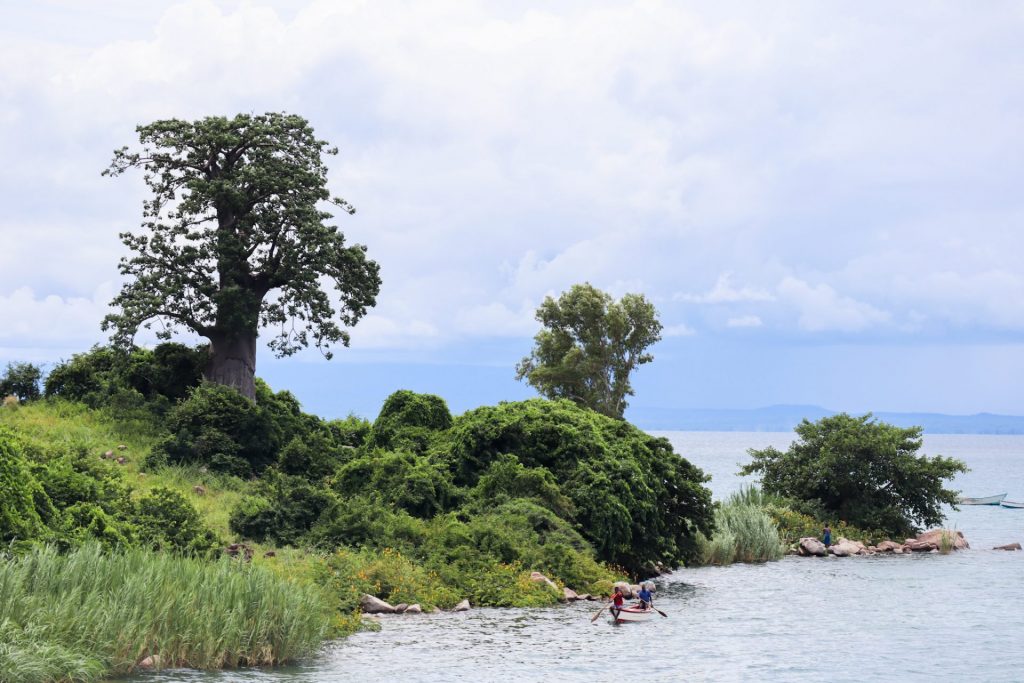

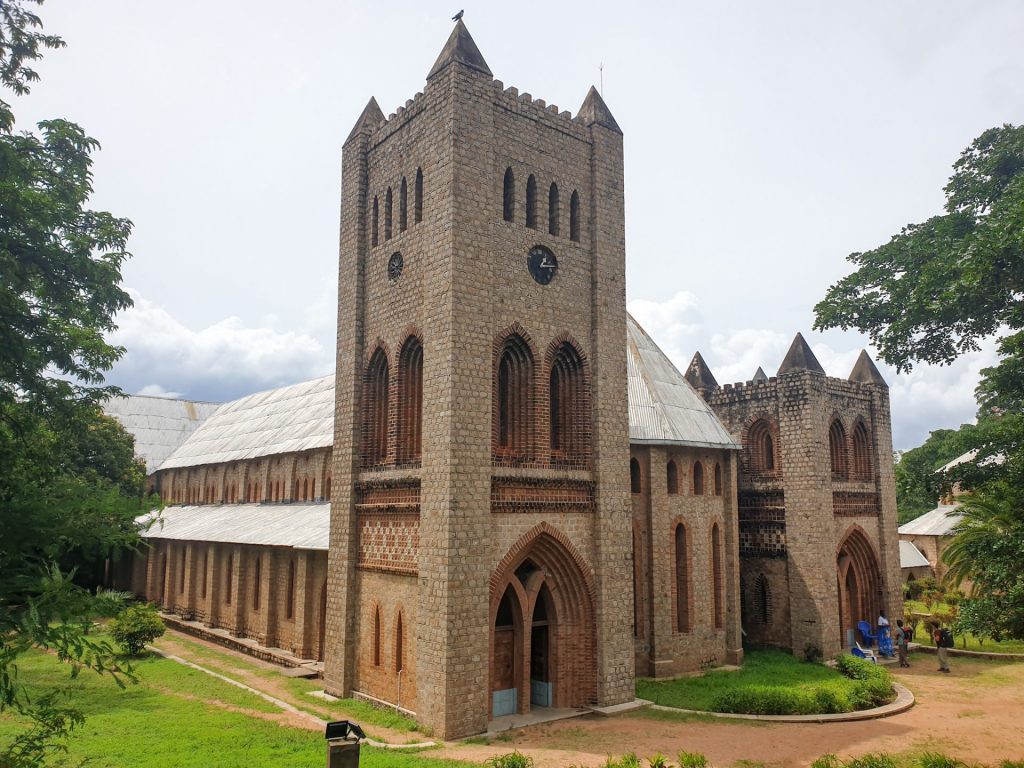


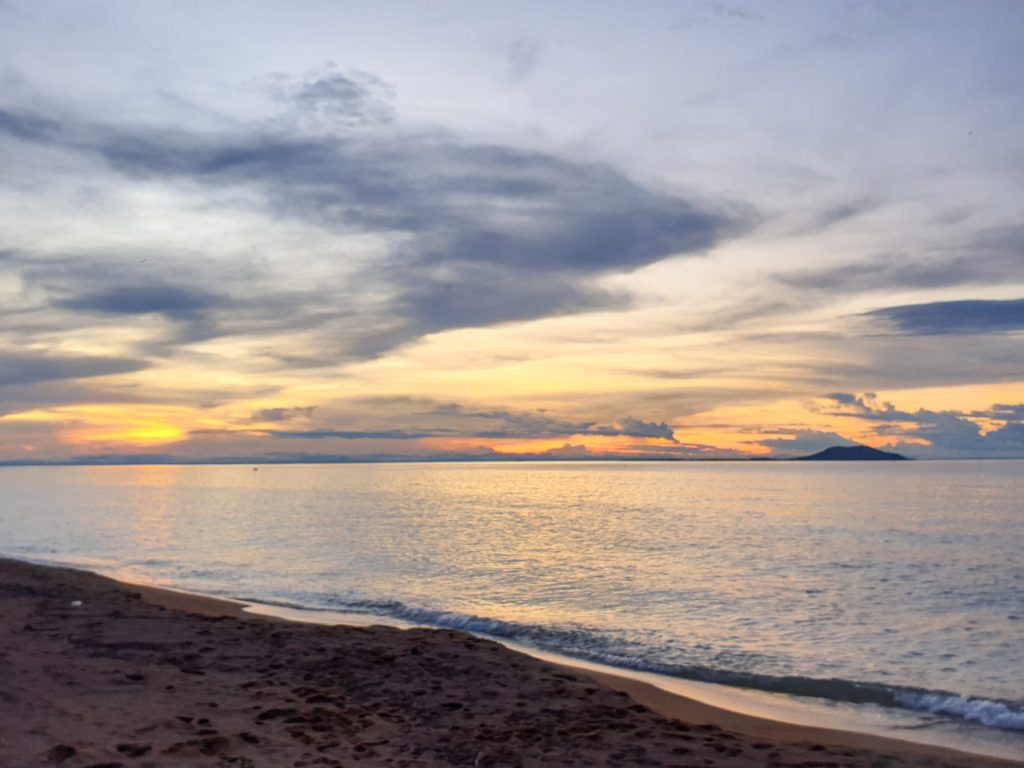
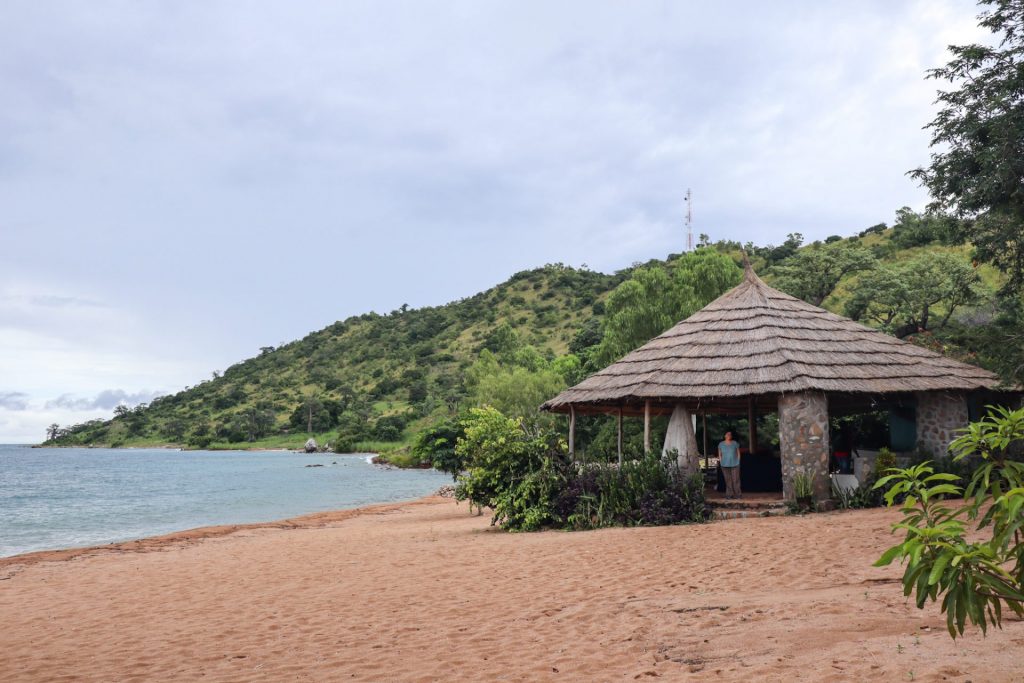
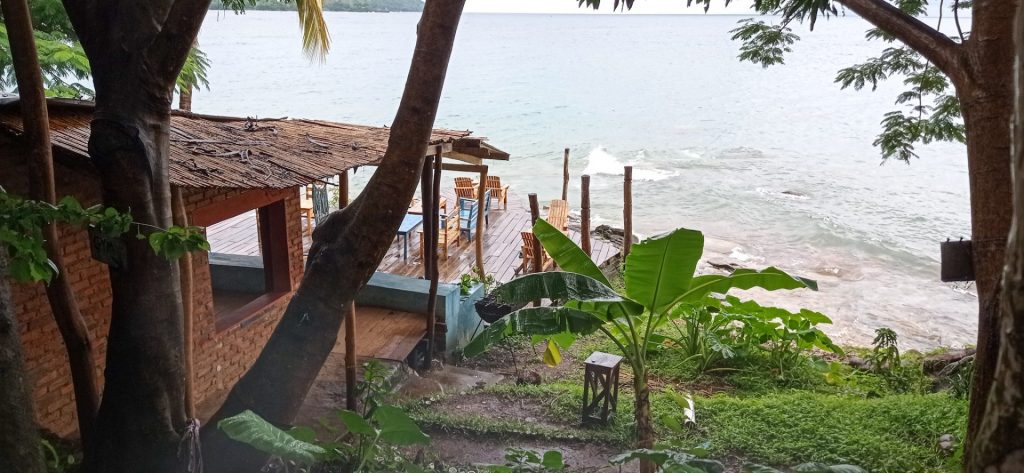
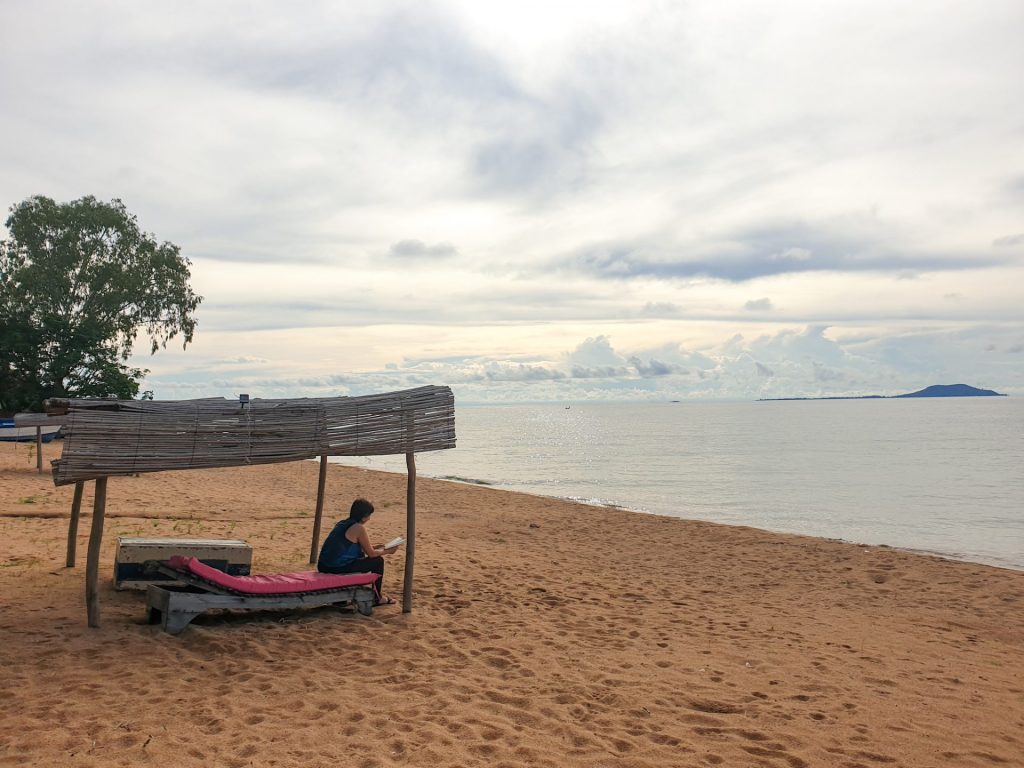
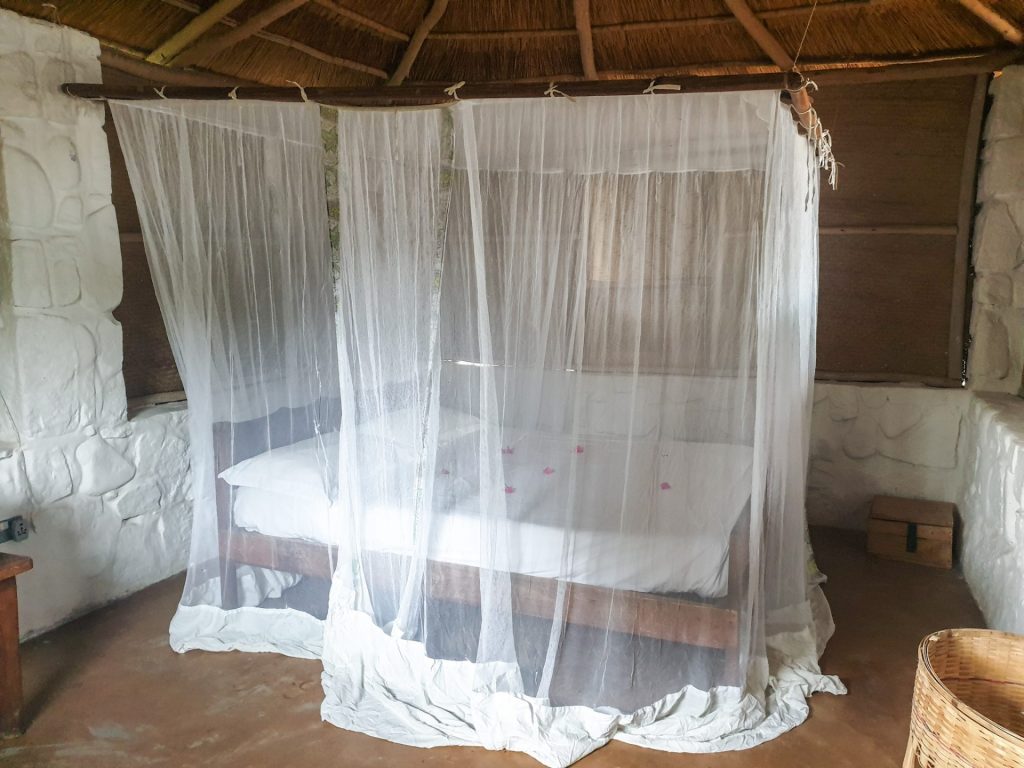


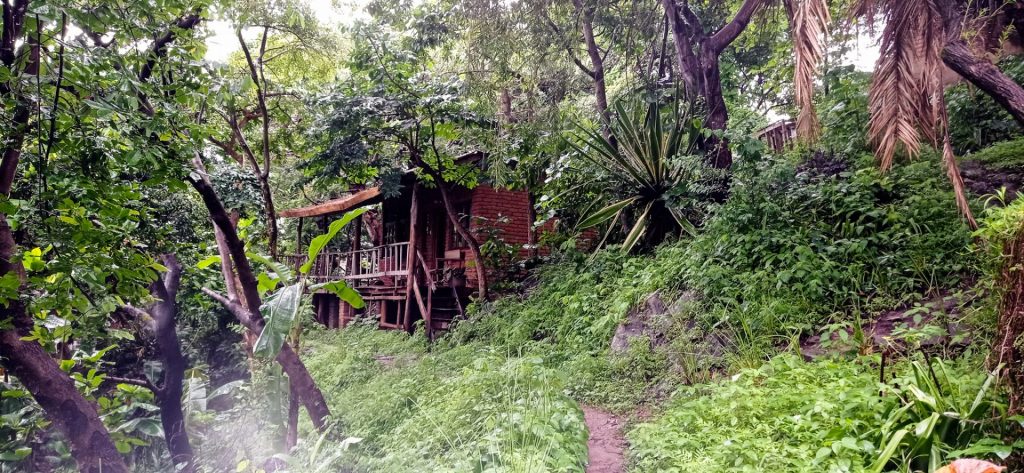
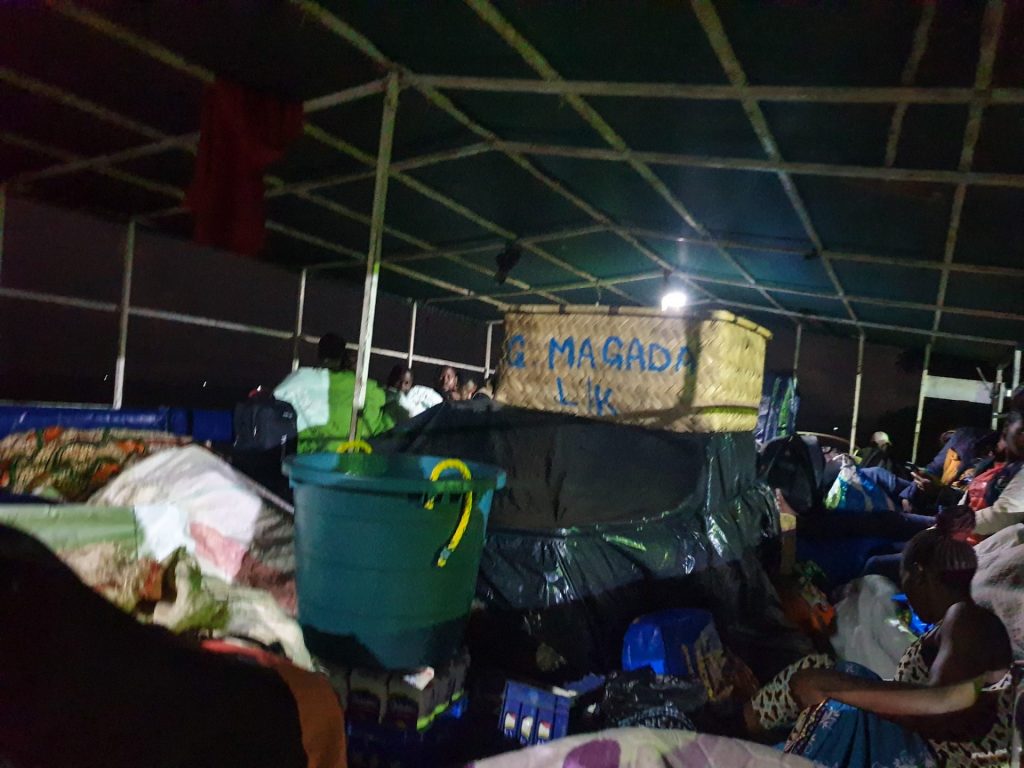

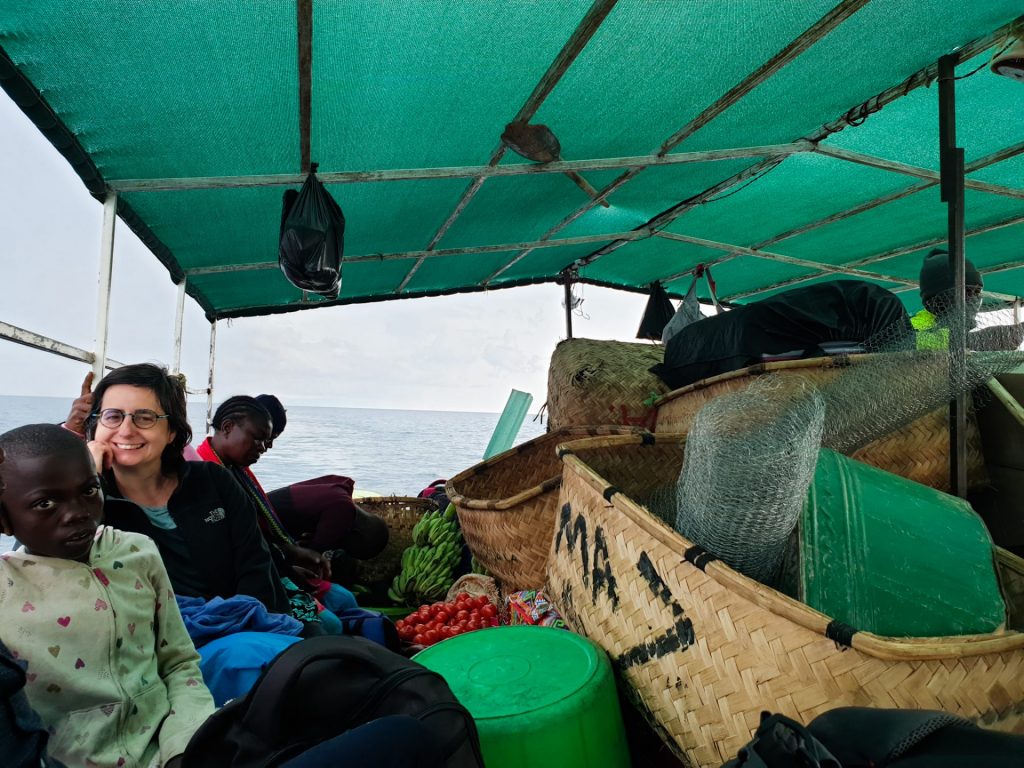
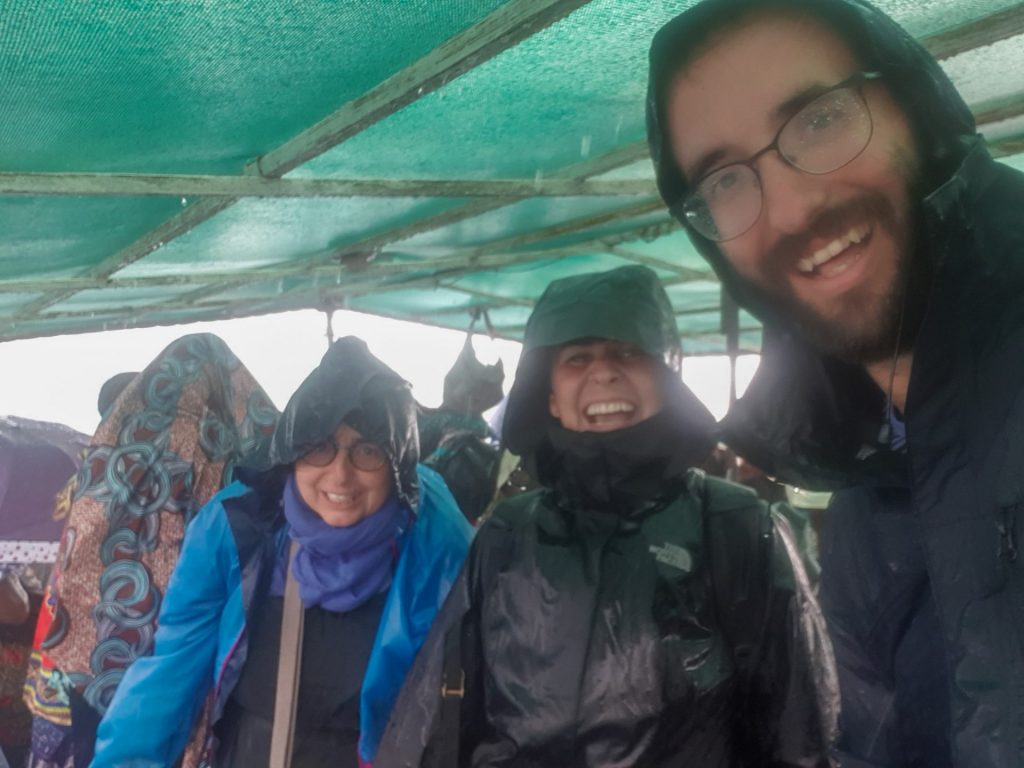
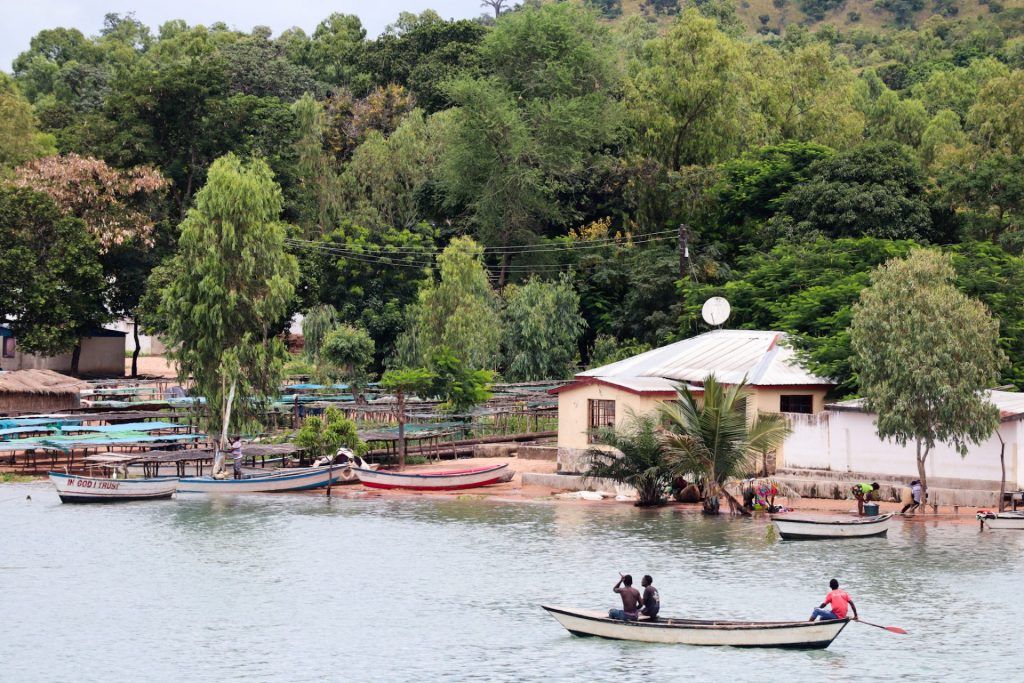
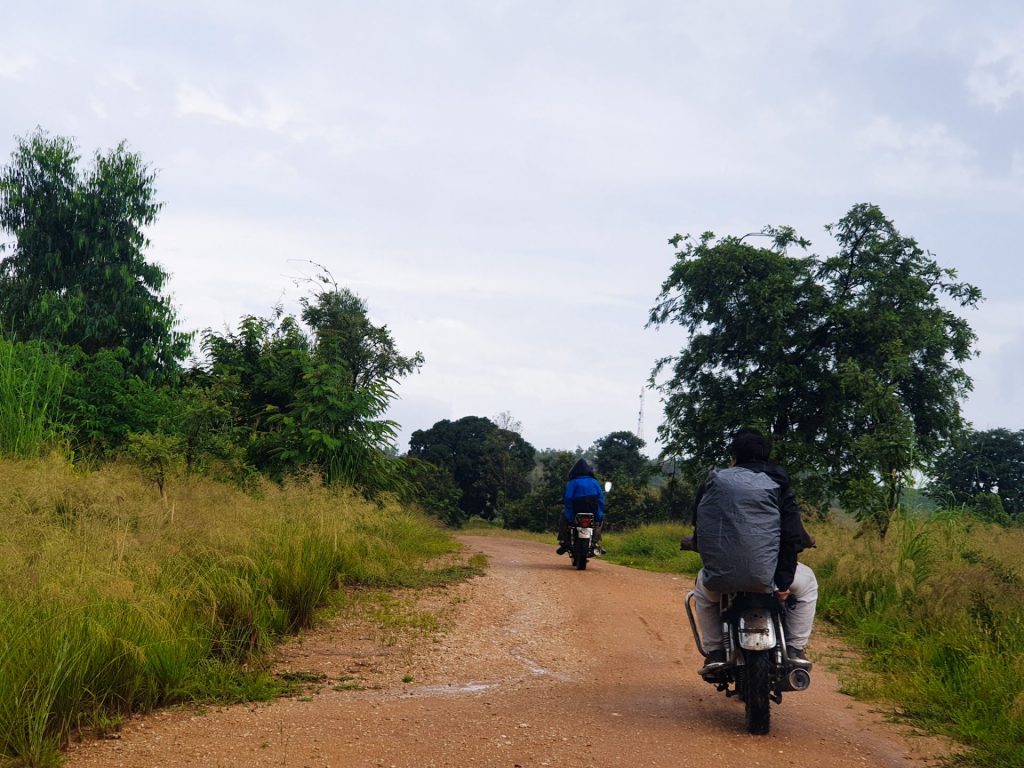

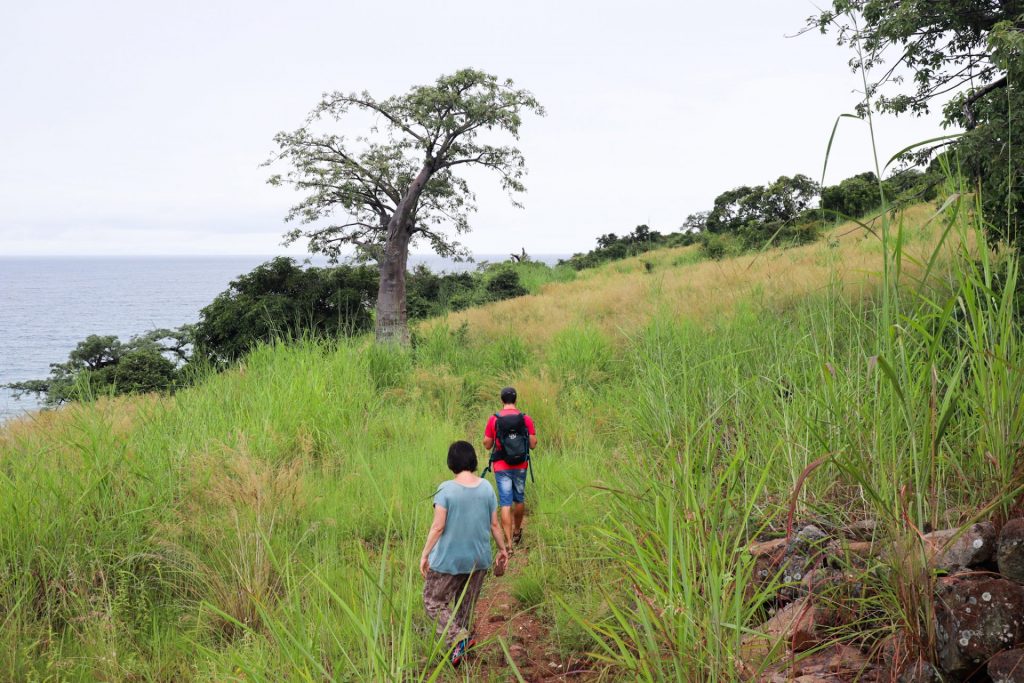



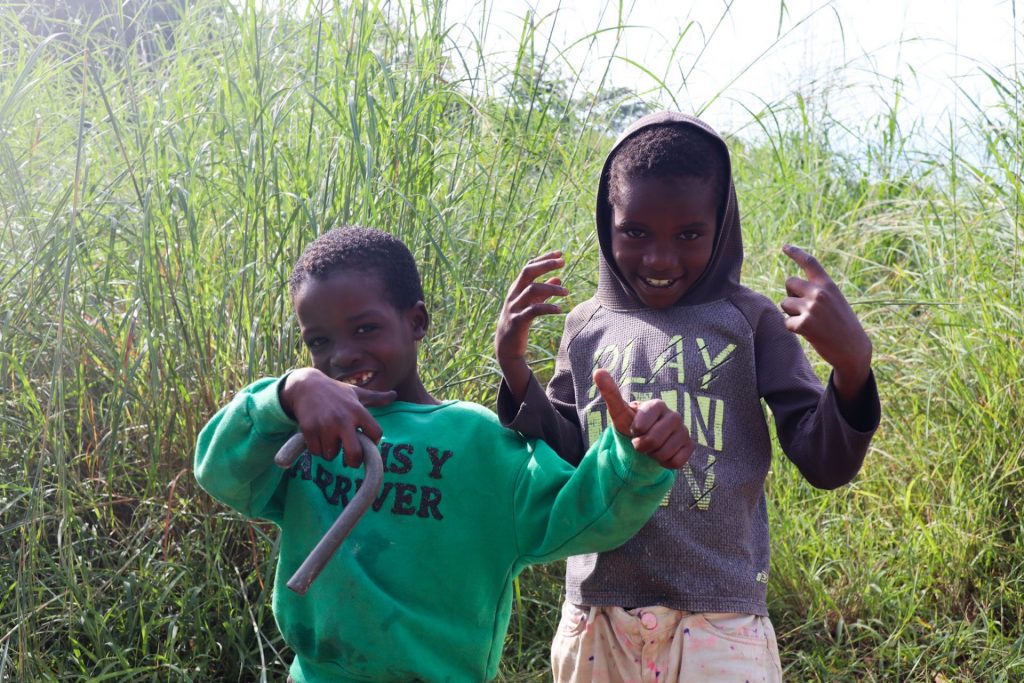

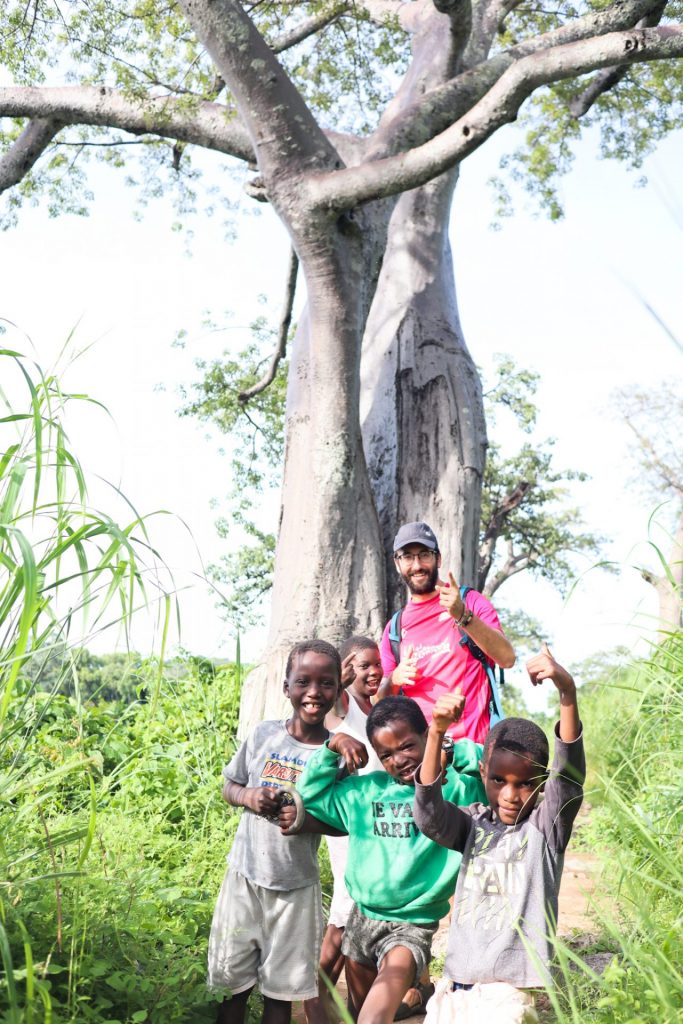



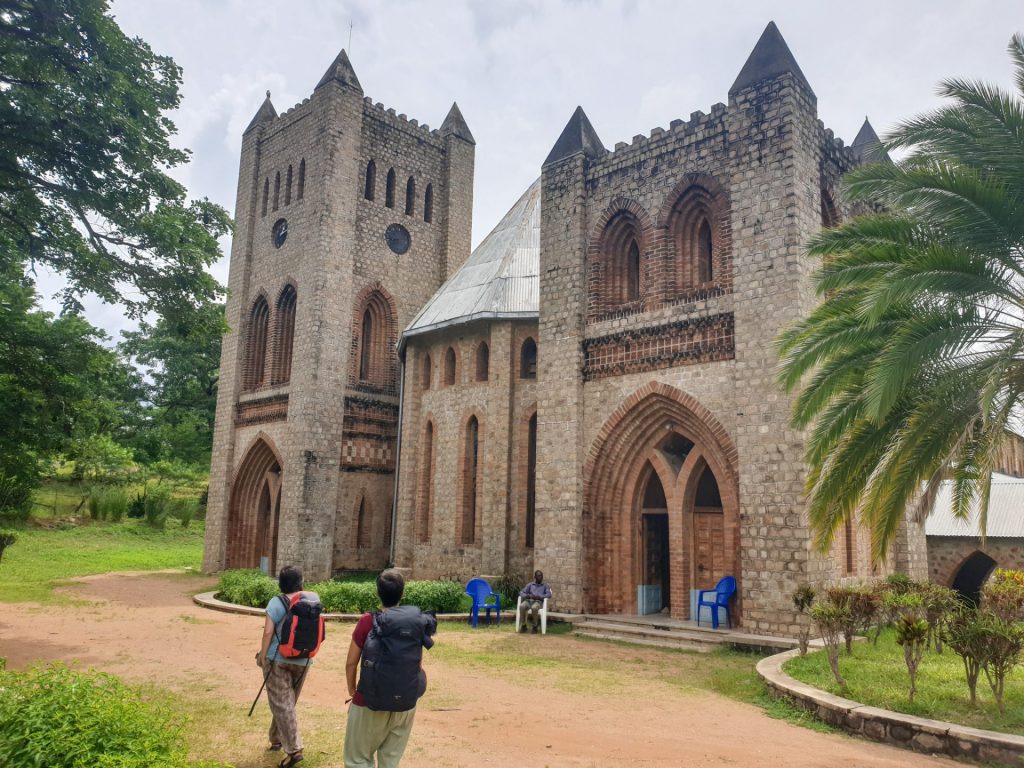




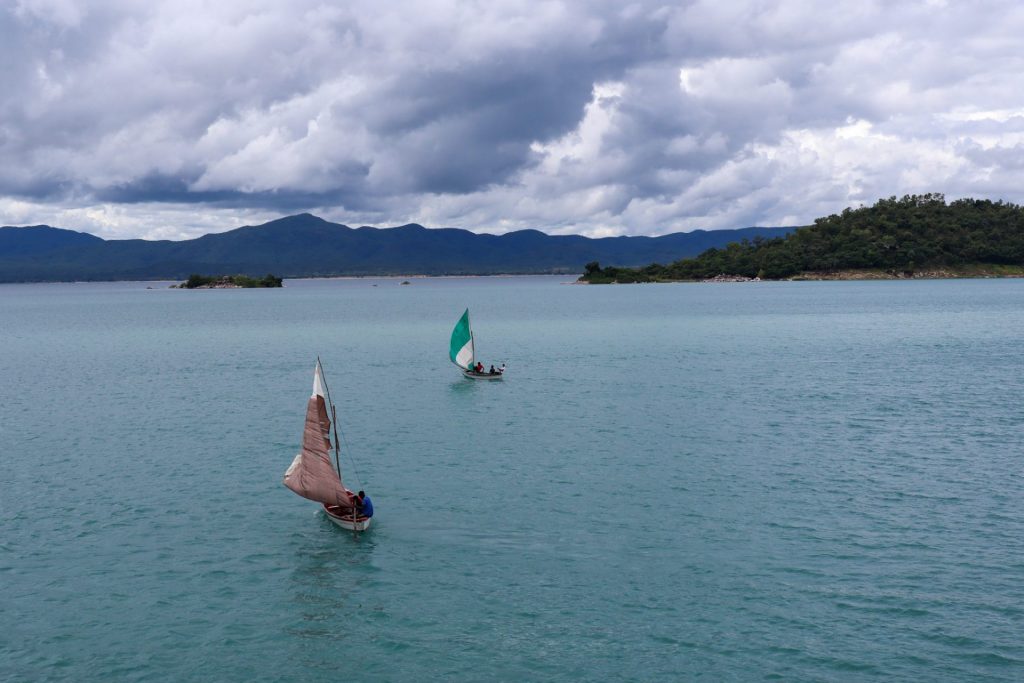
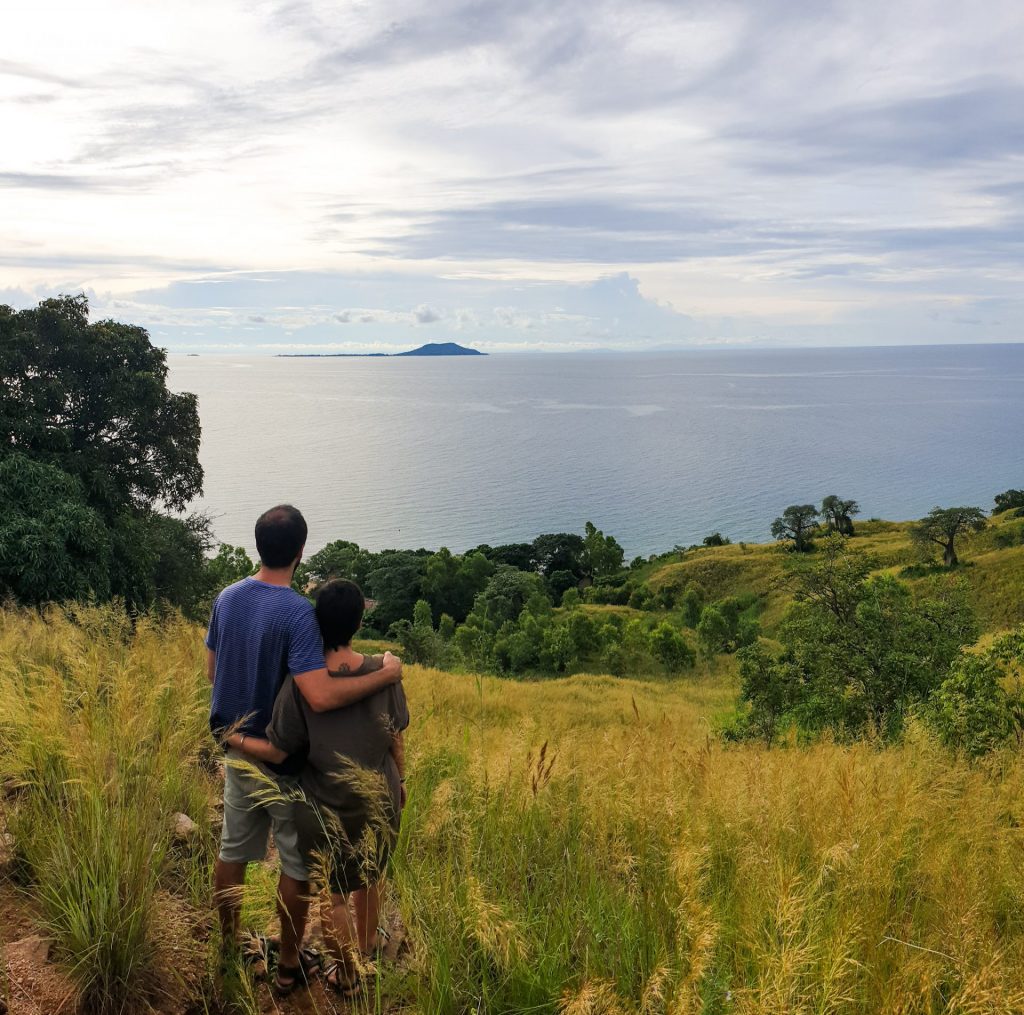

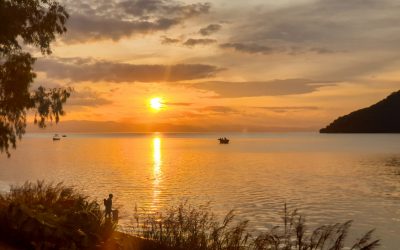
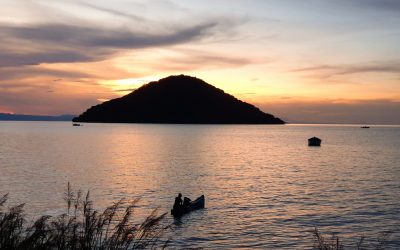
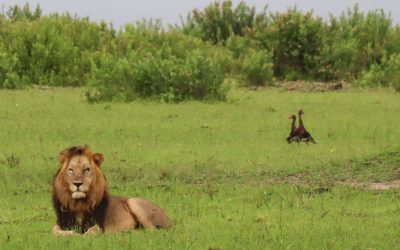
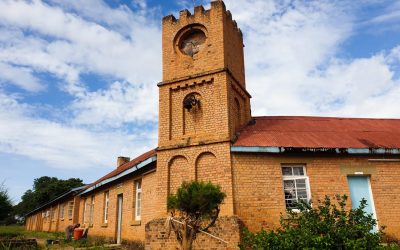

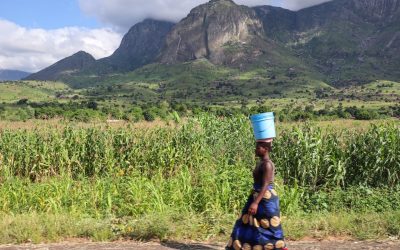
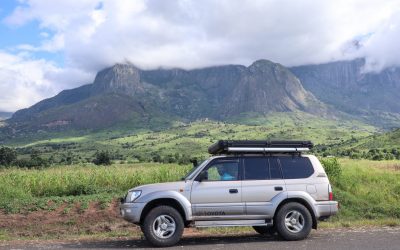
0 Comments